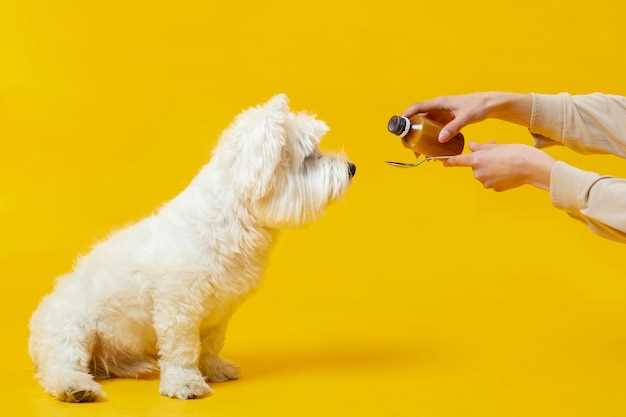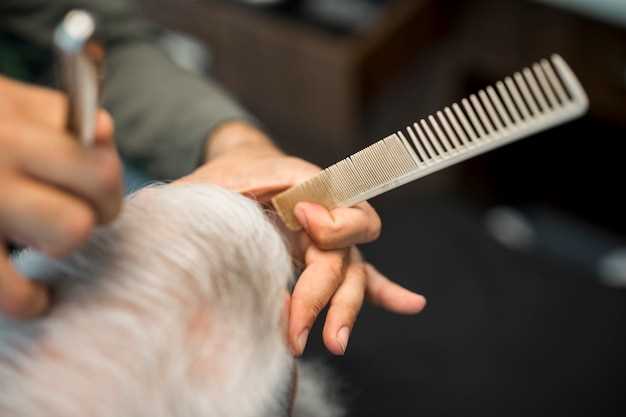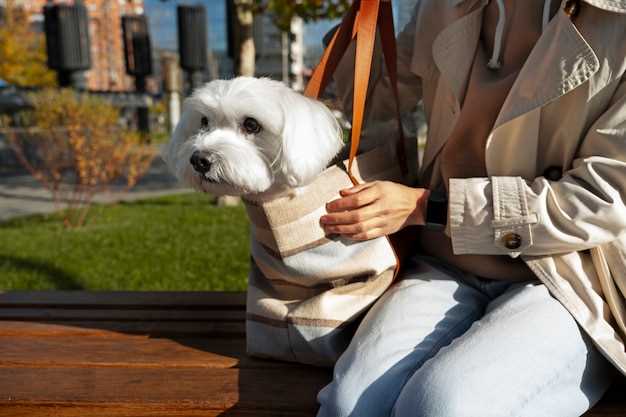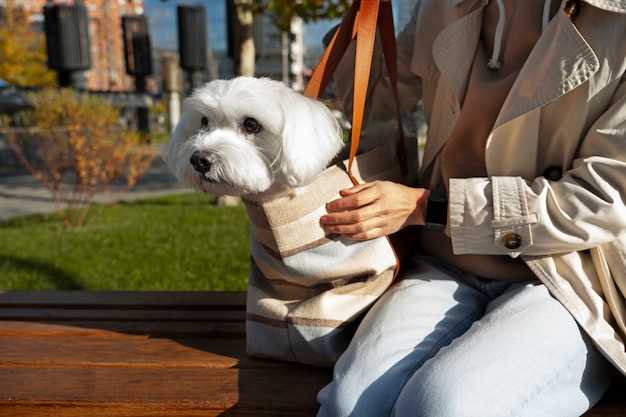Maltese Dog Grooming Tips for a Healthy and Shiny Coat
Maintaining a beautiful appearance for your furry companion is paramount. Regular care not only enhances their look but also contributes to their overall well-being. A well-kept coat reflects good health and happiness. Poor grooming habits can lead to tangles and skin issues, affecting your pet’s comfort. That’s why understanding effective methods is crucial.
It’s easy to overlook basic routines. You may not realize the importance of a structured regimen. Consistent care can prevent many common problems that arise from neglect. Each session with your pet should be rewarding and enjoyable, fostering a positive bond between you two.
Investing time in proper coat care is beneficial in numerous ways: it allows you to check for skin abnormalities, reduces shedding, and keeps your home cleaner. By adopting a few straightforward practices, you can ensure your companion remains not only attractive but also healthy. The right approach makes all the difference in their appearance.
Ultimately, the joy of seeing your pet flourish will bring fulfillment to both of you. With the right knowledge, the task becomes less daunting and more fulfilling. Embrace the journey of beautifying your furry friend while ensuring their happiness and health.
Maltese Dog Grooming: Essential Tips and Techniques

A well-maintained coat is crucial for your furry companion. Frequent care helps prevent matting and keeps it looking its best. Regular brushing not only removes dirt but also distributes natural oils. A happy pup often showcases a vibrant and silky appearance. Here, we delve into various methods to ensure optimal fur health.
The choice of brushes plays a significant role in this routine. For example, a slicker brush can tackle tangles efficiently, while a pin brush is great for finishing touches. Bathtime is another important aspect of coat care. Using a high-quality shampoo specifically designed for their coat type can enhance softness. The cleanliness of the coat contributes significantly to your pet’s overall well-being.
Moreover, trimming the fur around delicate areas should not be overlooked. Regular trim sessions help maintain a tidy appearance while keeping your furry friend comfortable. Incorporating a specific routine into this activity can also make it less stressful for both you and your pet. A calm environment, along with plenty of positive reinforcement, is key to successful haircut sessions.
Achieving a Healthy, Shiny Coat

Maintaining an impressive appearance is vital for any companion’s wellbeing. A lustrous fur reflects not only visual appeal but overall health. This goal requires a comprehensive approach involving various practices. Regular care and attention can lead to remarkable results. It’s important to consider different aspects that contribute to the vibrancy of the fur.
The foundation lies in a balanced diet. Proper nutrition is crucial. High-quality ingredients provide essential nutrients. These nutrients promote a glossy finish and contribute to vitality. Moreover, staying hydrated is equally important. Water helps maintain the skin’s elasticity.
Another key factor is consistent brushing. Frequent brushing removes loose hair and debris, preventing tangles. It also stimulates natural oils, which add a beautiful sheen. By integrating this habit into a routine, you’ll notice significant improvements in the fur’s texture. It can be enjoyable for both you and your companion.
Bathing should also be approached with care. Using the right shampoo can make a considerable difference. Look for formulas specifically designed to enhance fur health. Overbathing may strip essential oils, so timing is everything. Opt for a schedule that caters to their specific needs.
Additionally, regular visits to a specialized expert can help. They can provide services tailored to specific requirements. Regular trims not only maintain style but also eliminate split ends. This professional touch ensures a polished appearance that you both will appreciate.
Ultimately, achieving that coveted shine involves a blend of resources and practices. From nourishment and hydration to consistent brushing and expert care, it all counts. A little effort goes a long way in fostering a thriving and enviable coat that reflects the joy and vitality of your treasured companion.
Understanding the Maltese Coat Structure
The coat of these charming companions is truly unique and captivating. It consists of several layers, each serving a distinct purpose. The outer layer is long and silky, providing a stunning appearance. Beneath this, a soft undercoat offers insulation and protection. It’s fascinating how the combination of these layers creates a beautiful texture and consistency.
Regular maintenance is crucial. Neglect can lead to matting and tangling. Each strand needs care, as the coat can be prone to various issues. Understanding the structure aids in providing the right treatment and care. Unlike many breeds, this breed’s fur grows continuously, requiring routine attention.
By examining the coat closely, one notices the subtle differences in texture and length across areas. This variation occurs due to genetics and environmental factors. Apart from aesthetics, the coat is not merely decorative; it plays a significant role in regulating body temperature and serving as a barrier against external elements. Adequate hydration and nutrition contribute to its luster, while specific grooming practices can enhance its natural beauty.
Choosing the Right Grooming Tools
Selecting appropriate implements is crucial for maintaining an appealing appearance. The right accessories can make all the difference. Each tool serves a specific purpose. Using the wrong implement might lead to discomfort for your pet. Quality matters greatly; investing in sturdy options pays off.
Begin by assessing your companion’s needs. Different fur types require different handling. Brushes, combs, and clippers all play unique roles. A proper brush can untangle knots effectively, while a good comb is perfect for finishing touches. Additionally, clippers are essential for trimming fur in sensitive areas.
Consider durability as you shop for tools. You want items that will stand the test of time. A well-made brush or comb will not only last longer but also perform better. Your budget is important, but the health and comfort of your furry friend should always come first.
Always prioritize ergonomics. Comfort in handling makes the process easier and more enjoyable for both of you. Look for grips that fit comfortably in your hand. This will reduce strain during longer sessions. The right tools will not only enhance the experience but also ensure your companion feels at ease.
Bathing Techniques for Optimal Cleanliness
Maintaining cleanliness through bathing is crucial for overall well-being. Regular washes help remove dirt, debris, and odors. A proper bathing routine can significantly enhance appearance. It is also an excellent opportunity to check for skin issues. Following a structured approach makes it easier and more effective.
Choose a suitable location that is comfortable and spacious. Make sure the water temperature is just right, not too hot or cold. Gather all necessary supplies beforehand to avoid interruptions. Use a gentle, pet-friendly shampoo to ensure safety. Rinse thoroughly to prevent any residue buildup, which can irritate the skin.
When bathing, begin by wetting the fur completely. Massage the shampoo into the coat, ensuring it reaches the skin. Be thorough but gentle, taking your time to cover every area. After lathering, use a washcloth to clean sensitive areas, such as the face and paws. Encourage a calm environment to make the experience enjoyable.
| Step | Description |
|---|---|
| 1 | Choose a comfortable bathing location. |
| 2 | Select pet-safe shampoo for gentle cleansing. |
| 3 | Wet the coat thoroughly before applying shampoo. |
| 4 | Massage shampoo well into the coat and skin. |
| 5 | Make sure to rinse out all shampoo completely. |
Finally, ensure thorough drying after the bath. A towel can be used to absorb excess moisture, followed by a low-heat blow dryer for the rest. Be gentle during this process to maintain comfort and avoid stress, ensuring every aspect leads to a delightful outcome where your companion feels refreshed and clean.
Importance of Regular Brushing
Maintaining a consistent brushing routine plays a vital role in the overall well-being of your furry companion. It is not merely about aesthetics; it impacts their skin health as well. Regularly brushing can prevent tangles, mats, and excessive shedding. Moreover, it fosters a stronger bond between you and your pet. This shared activity brings joy and comfort to both parties.
Frequent grooming sessions help in the early detection of skin issues. Observing your pet closely during these moments allows you to identify any unusual lumps, bumps, or irritations. Additionally, brushing stimulates the skin, promoting blood circulation and distributing natural oils throughout the fur.
- Reduces the occurrence of tangles and mats.
- Minimizes shedding around the house.
- Encourages a healthy, vibrant appearance.
- Strengthens the bond between you and your pet.
Consistency is key, as a regular brushing schedule not only keeps the coat manageable but also ensures that your companion remains comfortable and happy. Engaging in this simple yet effective practice transforms grooming into a pleasant ritual that both you and your beloved pet will look forward to.
Best Practices for Overall Grooming Care

Maintaining your pet’s appearance is a vital part of their well-being. Regular attention fosters a bond and enhances their comfort. Proper procedures contribute to a delightful aesthetic while preventing potential issues. It’s not just about looks; health plays a key role. Every step taken in this process can lead to a happier companion.
Start by creating a comfortable environment for your furry friend. This reduces stress and makes the entire experience more enjoyable. Invest in good quality tools designed for their specific needs. Pay attention to the coat’s texture and the skin beneath. Regular checks can reveal hidden problems.
Brush regularly to prevent matting, as tangles can lead to discomfort. Use gentle motions to avoid irritation to their skin. Bathing should be done with care; too frequent can strip natural oils. Choose a mild shampoo formulated for sensitive skin. Always rinse thoroughly to eliminate soap residue.
Don’t forget the ears, nails, and teeth. Regular checks and cleanings can prevent long-term issues. Trim nails carefully, ensuring not to cut too deep; this requires practice. Maintain dental health with appropriate chews and toothpaste. Overall, this holistic approach will ensure that your companion looks and feels their best.
Nail Trimming Tips for Small Breeds
Trimming nails is a vital part of pet care. Neglected nails can lead to discomfort and health issues. Regular maintenance is essential for small breeds. The process may seem daunting at first, but with practice, it becomes easier.
Start by gathering the right tools. A quality nail clipper designed for small animals is crucial. You might also want to have a file or grinder on hand. Having treats ready can help make the process a positive experience.
- Select a well-lit area to ensure visibility.
- Gently hold your pet’s paw to examine the nails.
- Identify the quick, which is the sensitive part of the nail.
- Trim just the tip while avoiding the quick.
- Take breaks if your pet seems anxious or stressed.
Many small breeds require frequent trimming, often every few weeks, to prevent overgrowth and to maintain their comfort during daily activities. Consistency is key, so establishing a routine can significantly ease the process, making it a smooth experience for both you and your furry companion.
Always reward your pet after the session, reinforcing positive behavior. This encourages them to stay calm and cooperative in the future. With time, both of you will gain confidence in your nail-trimming skills. Plus, a relaxed atmosphere will make it more enjoyable for everyone involved.
Ear Cleaning and Maintenance
Maintaining ear hygiene is crucial for your pet’s overall well-being. Clean ears help prevent discomfort and infections. Regular attention to this area can save you from potential health issues down the line. Many owners often overlook ear care, but it’s a vital aspect that deserves focus.
Begin the process with a gentle inspection. Look for discoloration, unusual smells, or excessive wax buildup. If the ears appear dirty, it’s time for a thorough clean. Using a cotton ball or pad, moisten it with an appropriate cleaning solution designed for pets.
Carefully wipe the outer ear, avoiding deep penetration into the ear canal. It’s essential to be gentle and avoid causing any harm. A light touch goes a long way, as irritation can lead to issues. Persistent scratching or shaking of the head may signal discomfort that needs addressing.
Additionally, consider regular check-ups with your veterinarian. These professionals can provide guidance tailored to your pet’s needs and specific breed considerations. If you notice anything unusual, don’t hesitate to seek advice. Paying attention to ear health is a key part of your pet’s overall care routine, which should not be neglected.
Regularly cleaning the ears not only ensures comfort but also promotes a happier pet. This simple task can significantly improve their quality of life while preventing infections or irritations. Make it a habit to incorporate this practice into your routine, ensuring your furry friend stays comfortable and healthy.
Dental Care for Your Maltese
Maintaining oral hygiene is crucial for your furry companion. Strong teeth and healthy gums contribute significantly to overall well-being. Unfortunately, neglecting dental care can lead to serious health issues. Regular attention to this aspect can enhance their quality of life. So, how can you effectively support their dental health?
Start by introducing a proper brushing routine. Aim to brush their teeth several times a week. Use dog-specific toothpaste to ensure their safety. Consider employing a soft-bristled toothbrush, as it is gentle on their small mouths. Chewing toys can also help reduce plaque buildup while keeping them entertained.
Diet plays an integral role in maintaining strong teeth. Nutritious food options often help in preventing tartar formation. Dry kibble may be more beneficial compared to wet food. Additionally, special dental treats are available that not only taste great but also promote oral hygiene. Regular vet check-ups are necessary to monitor dental health.
Keep an eye out for signs of dental issues. Bad breath, swollen gums, or difficulty eating could indicate a problem. Address these concerns promptly with a veterinary professional. In the long run, proactive care can prevent complications and ensure a happier life.
Video:
HOW to TRIM a MALTESE at HOME! (Trimming your DOG at home) BASIC DOG GROOMING Tutorial
HOW to TRIM a MALTESE at HOME! (Trimming your DOG at home) BASIC DOG GROOMING Tutorial by Go Groomer 305,136 views 4 years ago 9 minutes, 51 seconds
Q&A:
What are the best grooming tools for Maltese dogs?
When grooming a Maltese dog, it’s essential to have the right tools to maintain their long, silky coat. The most important tools include a high-quality slicker brush to remove tangles and mats, a metal comb for detangling, and a pair of scissors for trimming any excess hair around the eyes and paws. Additionally, a good set of clippers can help for regular coat maintenance, along with dog shampoo and conditioner specifically formulated to keep their coat shiny and healthy. Regular grooming not only helps to keep your Maltese looking great but also prevents skin issues and promotes overall well-being.
How often should I groom my Maltese dog?
Maltese dogs require regular grooming to keep their coats healthy and free of tangles. Ideally, you should brush your Maltese daily to prevent mats and knots from forming. Bathing can be done every 3-4 weeks, but adjust the frequency based on your dog’s activity level and skin condition. Regular visits to a professional groomer every 6-8 weeks can also help maintain their coat and hygiene, ensuring that any tricky spots are addressed. Keeping a consistent grooming schedule will help you stay on top of your Maltese’s grooming needs.
What are some tips for bathing a Maltese dog?
Bathing your Maltese requires careful attention to ensure a positive experience for your dog and to maintain the health of their coat. Start by brushing your dog thoroughly to remove any tangles. Then, use lukewarm water to wet their coat and apply a dog shampoo specifically formulated for their coat type. Be sure to avoid getting shampoo in their eyes and ears. Rinse thoroughly and consider using a conditioner to keep their coat smooth and manageable. After bathing, gently towel dry your Maltese and avoid using a hairdryer on a high heat setting, as it can cause discomfort. Instead, allow them to air dry in a warm, draft-free area.
What should I look out for while grooming my Maltese?
While grooming your Maltese, pay close attention to various signs that might indicate skin problems or discomfort. Look for areas of excessive scratching or redness, as this may signal allergies or skin infections. Be cautious around sensitive areas, such as the eyes and ears; always use blunt-nosed scissors to trim hair around these areas to avoid injury. Additionally, watch for mats that may be close to the skin, as they can pull on the hair and cause discomfort. Lastly, ensure that you are using products that do not irritate your dog’s skin, as some shampoos and grooming products can cause reactions.
Can I groom my Maltese at home or should I hire a professional?
Grooming your Maltese at home can be a rewarding experience, and many owners successfully maintain their dog’s coat with regular brushing and bathing. However, if you’re not confident in your grooming skills, or if your Maltese has specific grooming needs, a professional groomer can provide services that ensure your dog looks its best. Professionals can also handle challenging tasks, like de-shedding, which can be difficult without the right tools. If you choose to go the DIY route, it’s essential to stay educated on proper techniques and grooming products. Combining at-home grooming with periodic visits to a groomer can provide the best of both worlds for your Maltese.
What are the essential grooming tools needed for a Maltese dog?
To effectively groom a Maltese dog, you’ll need several essential tools. A high-quality slicker brush is crucial for removing tangles and loose fur without damaging the coat. Additionally, a metal comb with both fine and wide-toothed sides helps in detangling sensitive areas and checking for mats. A pair of grooming scissors with rounded tips is necessary for trimming and shaping the coat safely. Don’t forget a good quality dog shampoo designed for sensitive skin, and a moisturizing conditioner to keep the coat shiny and healthy. Finally, consider having a pair of nail clippers and ear cleaning solution on hand for complete grooming care.
How often should I groom my Maltese to maintain a healthy coat?
Grooming a Maltese is essential to keeping its coat healthy and tangle-free. Ideally, you should groom your Maltese dog at least once a week. However, due to their long, flowing coats, daily brushing is recommended to prevent matting and keep their fur shiny. Regular grooming helps to remove dirt and loose hair, distributes natural oils throughout the coat, and promotes a healthy skin condition. Additionally, consider scheduling a professional grooming session every four to six weeks for a thorough clean, trim, and to check for any underlying skin issues. Remember, grooming is not just about aesthetics; it’s also about ensuring the overall well-being of your beloved pet.
